Otoplasty in Barbados
Search and Compare the Best Clinics and Doctors at the Lowest Prices for Otoplasty in Barbados

Find the best clinics for Otoplasty in Barbados
No clinics available
Egypt offers the best prices Worldwide
Price: $ 100

- Home
- Barbados
Compare Before & After Photos of _procedure_photos.phpOtoplasty
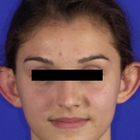
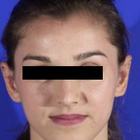
Front view
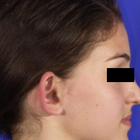
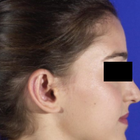
Full-side view
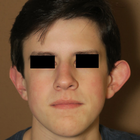

Front view

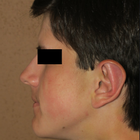
Full-side view
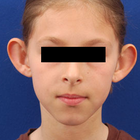
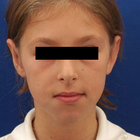
Front view
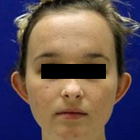
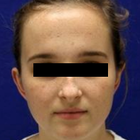
Front view
WHY US?
At Medijump, we're making medical easy. You can search, compare, discuss, and book your medical all in one place. We open the door to the best medical providers worldwide, saving you time and energy along the way, and it's all for FREE, no hidden fees, and no price markups guaranteed. So what are you waiting for?

Free

Best Price

Widest Selection

Risk-Free
What you need to know about Otoplasty in Barbados

Otoplasty, also referred to as cosmetic ear surgery, is a type of cosmetic procedure to change the size, shape, or position of the ear. It is performed on the visible part of the outer ear, called auricle. Some people choose to have the surgery to correct odd-shaped ears due to an injury or birth defect. Others have it because they are concerned with how their ears protrude too far from their head. Otoplasty can be performed at any age after the ears have reached their full size, generally after age 5. In some cases, the surgery may be done as early as age 3.
There are several types of otoplasty. The following are the most common:
- Ear pinning draws the ears closer to the head. It is usually done on people whose ears stick out too far from their head.
- Ear augmentation is ideal for individuals whose ears are small or have not completely developed. This type of otoplasty can increase the size of the outer ear.
- Ear reduction is usually done on people with macrotia, which is a condition when the ears are larger than normal. Otoplasty can reduce the size of the ears.
What does a Otoplasty Procedure Involve?
Otoplasty is typically carried out under local anesthesia with a sedative, so you will be awake but you will not feel any pain. In some cases, general anesthesia may be used, typically for younger children.
The techniques used by your surgeon vary based on the type of otoplasty you are having. In general, your surgeon makes an incision either within the inner creases of your ears or on the backs of your ears. Then, your surgeon manipulates the tissue of the ear, which may include removal of cartilage or skin, grafting of cartilage to the ear, or folding and shaping of cartilage using permanent stitches. Once your surgeon is done correcting the shape, size, and position of your ears, the incisions are closed with stitches.
How Long Should I Stay in Barbados for a Otoplasty Procedure?
Otoplasty can take between 1 and 3 hours to perform, depending on the complexity and the specifics of the procedure. It is typically done as an outpatient procedure, which means you can leave the hospital on the same day. It is recommended that you stay in Barbados for 7 more days for follow-up checkups and removal of stitches.
What's the Recovery Time for Otoplasty Procedures in Barbados?
The recovery period may vary from one person to another. You may experience numbness for several weeks, and mild bruising for about 2 weeks. For several months, your ears may feel stiff and sore.
You should be able to go back to work and resume your normal activities, including exercise, within one to two weeks after surgery. Physical contact sports, such as rugby, football, or judo, should be avoided for at least 3 months. You should also avoid swimming for up to 8 weeks following your otoplasty.
What sort of Aftercare is Required for Otoplasty Procedures in Barbados?
Your surgeon will provide post-operative instructions. Make sure to follow the instructions carefully to promote smooth and quick recovery. You should rest with your head elevated on 2-3 pillows to minimize swelling. It is recommended that you eat a light, soft, and cool diet for several days. Take pain medication as prescribed by your doctor. Avoid sleeping on your side or rub the incisions to keep pressure off your ears. Consider wearing shirts with loose-fitting collars or button-down shirts.
What's the Success Rate of Otoplasty Procedures in Barbados?
Otoplasty is a safe and effective procedure, with high satisfaction rates. More than 90% of people who had the procedure claimed to be extremely happy with the results. Note that it may take some time for the result to be fully visible.
While it is a safe procedure, you still need to be aware of possible risks and complications that otoplasty carries. These include bleeding, hematoma formation, infection of the skin, infection of the cartilage of the ear, permanent or temporary numbness around the affected area, scar or keloid formation, unfavorable results, prolonged pain, narrowing of the external ear canal, impaired healing, changes in skin sensation, asymmetry, and overcorrection.
Are there Alternatives to Otoplasty Procedures in Barbados?
There are not many viable alternatives to otoplasty as of yet. One of the most popular alternatives is nonsurgical otoplasty, which does not require any incisions. The procedure uses special sutures to pin the ears back and achieve a more symmetrical look. These sutures are woven into the ears and will remain in place permanently. They are also virtually invisible, so the results will look natural.
For babies under three months old with prominent ears, ear-molds can be taped to their ears to reshape the ears without surgery. This type of treatment typically takes about six to eight weeks.
What Should You Expect Before and After the Procedure
Before otoplasty, you may have prominent or large ears or other deformity caused by an injury or birth defect that bothers you. Some people also feel self-conscious and embarrassed by the shape, size, and position of their ears. After the procedure, your ears will be corrected. Small or underdeveloped ears will be augmented to increase the size, the size of large ears will be reduced, and prominent ears will be drawn closer to the head. Your appearance will improve and you may feel more confident.
Whilst the information presented here has been accurately sourced and verified by a medical professional for its accuracy, it is still advised to consult with your doctor before pursuing a medical treatment at one of the listed medical providers
No Time?
Tell us what you're looking for and we'll reachout to the top clinics all at once
Enquire Now

Popular Procedures in Barbados
Prices Start From $28

Prices Start From $1,945

Prices Start From $120

Prices Start From $275

Recommended Medical Centers in Barbados for procedures similar to Otoplasty

- Interpreter services
- Translation service
- Religious facilities
- Medical records transfer
- Medical travel insurance
- Health insurance coordination
- TV in the room
- Safe in the room
- Phone in the room
- Private rooms for patients available
Otoplasty in and around Barbados
Introduction
Barbados is an island country located in the Caribbean region of North America. This vibrant island nation boasts an abundance of astounding natural beauty, beautiful weather, smashing nightlife, beautiful architecture, and welcoming people. Beyond its white sand beaches and dazzling turquoise bays, Barbados is also an emerging medical tourism destination. It is known as a leading destination for IVF, rehabilitation, and a wide range of surgical and non-surgical treatments. Hospitals and clinics in the country are equipped with modern technology and high-quality services. The doctors and specialists are highly-trained and international patients can enjoy the country’s beauty and tranquility, while undergoing a medical procedure and holistic therapy at the spa. This allows patients to be at their optimum relaxation when they undergo medical treatment, making the recovery period easier and the success rate higher.
Popular Cities and Regions in Barbados
Bridgetown, Barbados’ UNESCO World Heritage-listed capital, is filled with old colonial architecture and vibrant culture. Visitors can go to the beautifully restored Barbados Synagogue, learn more about cricket in the Cricket Legends of Barbados, explore the history of the country in Barbados Museum, and admire the beauty of the neo-Gothic parliament. Those who want to experience the tranquil beaches and the calm Caribbean Sea should visit Holetown. Located 13.5 kilometers from Bridgetown, this beautiful city offers the perfect blend of history with modern-day living. It is lined with world-famous restaurants and museums. The main draw of the city is its beaches, and most tourists come to witness the remarkable sea turtles in their natural habitat, try out paddle boarding, or see the man-made coral reef. Aside from Holetown and Bridgetown, other popular cities are Bathsheba, Oistins. And Speightstown.
Transport in Barbados
International visitors will arrive at Grantley Adams International Airport as the airport serves the US, Canada, Central America, and Europe. A great way to travel around the country is by bus, which is the most affordable mode of transportation. Visitors who need a more flexible option can opt for a taxi. Taxis in the country are not metered, but the fares are regulated by the government based on the distance traveled and the cost is reasonably priced.
Visas in Barbados
Barbados allows citizens of most countries, including Australia, the US, all EU countries, and the UAE, to visit and stay without a visa for up to 180 days. Nationals of other countries, such as Libya and Egypt, need a visa before arrival. All visitors must have a valid passport for at least 6 months.
Weather in Barbados
Located in the tropics, Barbados experience hot sunny days and tropical rain showers during the summer months (mid-April to November). The cooler season (December to mid-April) has dry and less humid weather, making it the best time to visit the country.
Additional Info
- Local Currency: Barbadian dollar (BBD) is the official currency in Barbados. 1 USD will get you approx. 2 BBD.
- Money & Payments: While you still need some Barbadian dollars on hand, some businesses will accept US dollars and major credit cards. Tip 10% to 15% for taxis and in restaurants. Tip porters 2 BBD per bag and tip cleaning staff at your discretion.
- Local Language: English is the official language of Barbados.
- Local Culture and Religion: Christian is the predominant religion. Religious freedom is established by law, and other religions, such as Islam, Hinduism, Buddhism, and Judaism, are present.
- Public holidays: Some of the public holidays celebrated in Barbados are New Year’s Day, Errol Barrow Day, National Heroes’ Day, Kadooment Day, and Independence Day.
Popular Searches
- Plastic Surgery in Thailand
- Dental Implants in Thailand
- Hair Transplant in Thailand
- Breast Augmentation Thailand
- Gastric Sleeve in Thailand
- Gender Reassignment Surgery in Thailand
- Laser Hair Removal in Bangkok
- Botox in Bangkok
- Dermatology in Bangkok
- Breast Augmentation in Bangkok
- Coolsculpting in Bangkok
- Veneers in Turkey
- Hair Transplant in Turkey
- Rhinoplasty in Turkey
- Stem Cell Therapy in Mexico
- Rhinoplasty in Mexico
- Liposuction in Mexico
- Coolsculpting in Tijuana
- Rhinoplasty in Korea
- Scar Removal in Korea
- Gastric Sleeve in Turkey
- Bone Marrow Transplant in India
- Invisalign in Malaysia
- Plastic Surgery in the Dominican Republic
- Tummy Tuck in the Dominican Republic
- Plastic and Cosmetic Surgery in Poland
- Rhinoplasty in Poland
- Hair Implant in Poland
- Dental Implants in Poland
- IVF in Turkey